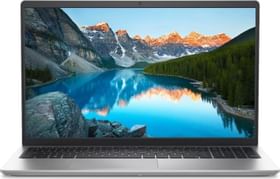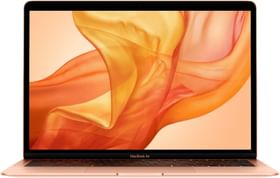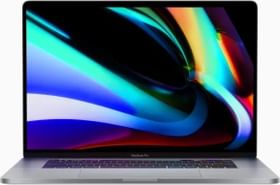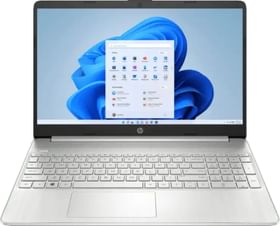Snapdragon 8 Gen 1 SoC is Qualcomm’s flagship chipset for the year incoming. Bearing a new nomenclature and some advanced technologies at its disposal, Snapdragon 8 Gen 1 platform is a top-end processor for smartphones. But it isn’t the only new chip to arrive in the market lately. We have had the Dimensity 9000 from MediaTek, A15 Bionic from Apple, and Tensor from Google. So, how does the Qualcomm silicon stack up against these? To know that, we are comparing it with its counterparts. Here, we will be pitting it against Google’s chip while there are dedicated comparisons with others too. So, you may check them out as well. For now, let’s see how the Google Tensor fares against the Snapdragon 8 Gen 1.
Snapdragon 8 Gen 1 vs Google Tensor: Perfect Opponents
While both the chipsets are manufactured on Samsung process nodes, the Antutu score of Snapdragon 8 Gen 1 is 1025215 which is way higher than Tensor’s 676789 scores. Clearly, both the SoCs come with different sets of specifications at CPU, GPU, ISP, AI, ML, connectivity, and other features. Let’s discuss them all, but one at a time.
Qualcomm Snapdragon 8 Gen 1 vs Google Tensor: CPU
Starting off with the manufacturing technology, Snapdragon 8 Gen 1 is developed based on Samsung’s 4nm process while Google has manufactured its maiden Tensor chip employing Samsung’s old 5nm process node.

Coming to the CPU configuration, Snapdragon 8 Gen 1 uses ARMv9 architecture that includes a 3GHz Cortex-X2 prime core, three 2.5GHz Cortex-A710, and four Cortext-A510 cores with a clock speed of 1.8GHz. Tensor chip, on the other hand, comes with two Cortex-X1 cores at 2.28GHz, two Cortex-A76 cores clocked at 2.25GHz, and four 1.8GHz Cortex-A55 cores.
The Cortex X2 prime core in Snapdragon 8 Gen 1 is claimed to provide 30% improved performance than its previous-gen X1 core used in Tensor. The A710 offers 30% better energy optimization and 10% performance enhancement. Lastly, the Cortex-A510 promises 35% more performance and 20% energy efficiency.

Also, Snapdragon 8 Gen 1 is naturally meant to provide better thermal performance with fewer heating issues. While the Pixel 6 series has been already reported facing thermal problems. This ranks Snapdragon 8 Gen 1 better than Tensor chipset.
ALSO READ: Qualcomm Snapdragon 8 Gen1 vs MediaTek Dimensity 9000: Which one has an edge over the other?
Qualcomm Snapdragon 8 Gen 1 vs Google Tensor: GPU

Qualcomm has equipped Snapdragon 8 Gen 1 with an unnamed next-gen Adreno GPU claiming to deliver 30% enhancement in performance and 25% in power efficiency. Google Tensor comes with an ARM Mali-G78 MP20 GPU. Snapdragon’s GPU is claimed to offer a new control panel for calibrating gaming performance and it also benefits from AI capabilities. As of now, the benchmark test of the Snapdragon 8 Gen 1 is not out to compare it with the Tensor’s score of 6,300 in 3DMark Wildlife benchmarking. We will be back with the related information as soon as we get them.
Qualcomm Snapdragon 8 Gen 1 vs Google Tensor: ISP

Succeeding to the Snapdragon 888’s 14-bit ISP, Qualcomm has used its introductory 18-bit ISP in the Snapdragon 8 Gen 1 platform. The new ISP is designed to capture up to 3.2 Gigapixels per second and is claimed to shoot 240 12MP images per second bringing a giant leap. The 18-bit ISP can record 8K HDR videos at 30fps and 4K@120fps. On the other hand, Pixel’s Tensor SoC follows the HDRnet algorithm to shoot 4K videos at 60fps.
Snapdragon 8 Gen 1 vs Google Tensor: AI and ML
Qualcomm has applied 7th Gen AI Engine and 3rd Gen Sensing Hub that respectively provides two times faster acceleration with more shared memory and leads to additional data stream affairs. The company has also partnered with Leica to introduce Leica’s bokeh effect for a better AI-enabled imaging capacity. The Gen 1 chipset also comes with vocal analyzers to determine health conditions like COVID-19, asthma, and depression (although this is yet to be tested). The induction of ‘Hugging Face’ Natural Language Processing is also present to better arrange the device’s notifications.
Meanwhile, Google also claims to design Tensor based on the AI/ML platform of the Tensor Processing Unit. It comes with features including Motion Mode, Magic Eraser, Live Translate, Face Unblur, Speech enhancement mode for videos, and applying HDRnet to videos among others.
Snapdragon 8 Gen 1 vs Google Tensor: Connectivity

The Snapdragon 8 Gen 1 is equipped with the industry’s leading Snapdragon X65 5G modem which is said to offer 10Gbps of downstream. While Tensor chip comes with Exynos 5123 modem offering a relatively lower 7.35Gbps download speed. Both the chipsets support Wi-Fi 6, Wi-Fi 6E, and Bluetooth 5.2 connectivity features.
Qualcomm Snapdragon 8 Gen 1 vs Google Tensor: Specs
| Factors | Snapdragon 8 Gen 1 | Google Tensor |
| Process Technology | Samsung’s 4nm process node | Samsung’s 5nm process node |
| CPU | Kryo, octa-core CPU | Tensor, octa-core CPU |
| CPU Cores | 1x Cortex-X2 (3.0GHz) 3x Cortex-A710 (2.5GHz) 4x Cortex-A510 (1.8GHz) | 2x Cortex-X1 (2.8GHz) 2x Cortex-A76 (2.25GHz) 4x Cortex-A55 (1.8GHz) |
| GPU | Adreno GPU (undisclosed) | 20-core ARM Mali-G78 MP20 |
| AI and ML | 7th Gen Qualcomm AI Engine | Tensor Processing Unit |
| ISP | 18-bit Spectra ISP | Tensor ISP |
| Camera Capability | -Up to 36 MP triple camera @ 30 FPS with Zero Shutter Lag -Up to 64+36 MP dual camera @ 30 FPS with Zero Shutter Lag -Up to 108 MP single camera @ 30 FPS with Zero Shutter Lag -Up to 200 Megapixel Photo Capture | -50MP Zero-shutter lag -Motion Mode |
| Video Capability | -8K HDR videos @ 30 FPS -4K videos @ 120 FPS -Slow-motion 720p videos @ 960 FPS | -4K @ 60FPS on Rear camera -4K @ 30FPS on Front camera -Google HDRnet |
| Modem | Snapdragon X65 5G Modem (10 Gbps Peak Download speed) | Samsung Exynos 5123 Modem (7.35 Gbps Peak Download speed) |
| Wi-Fi Version | Wi-Fi 6E | Wi-Fi 6E |
| Bluetooth Version | Bluetooth 5.2 | Bluetooth 5.2 |
Qualcomm Snapdragon 8 Gen 1 vs Google Tensor: Verdict
The design and configuration of both processors are undoubtedly impressive with some notable differences. Qualcomm brings its decades of experience in manufacturing mobile processors to the table while Google is new to the scene. Google has made a good start and can succeed from here with potential improvements in the subsequent variants. Until then, on paper, Snapdragon 8 Gen 1 has a lead over the current Google Tensor. However, we await to test phones wielding both chips side by side. The Pixel 6 series carries the Tensor SoC while mobiles phones that are expected to bear Qualcomm’s chip include Realme GT 2 Pro, Xiaomi 12, Samsung Galaxy S22 Ultra, OnePlus 10 Pro, iQOO 9 Pro, Oppo Find X4 Pro, and more. Also, you can find more details on these smartphones in a separate article.






























